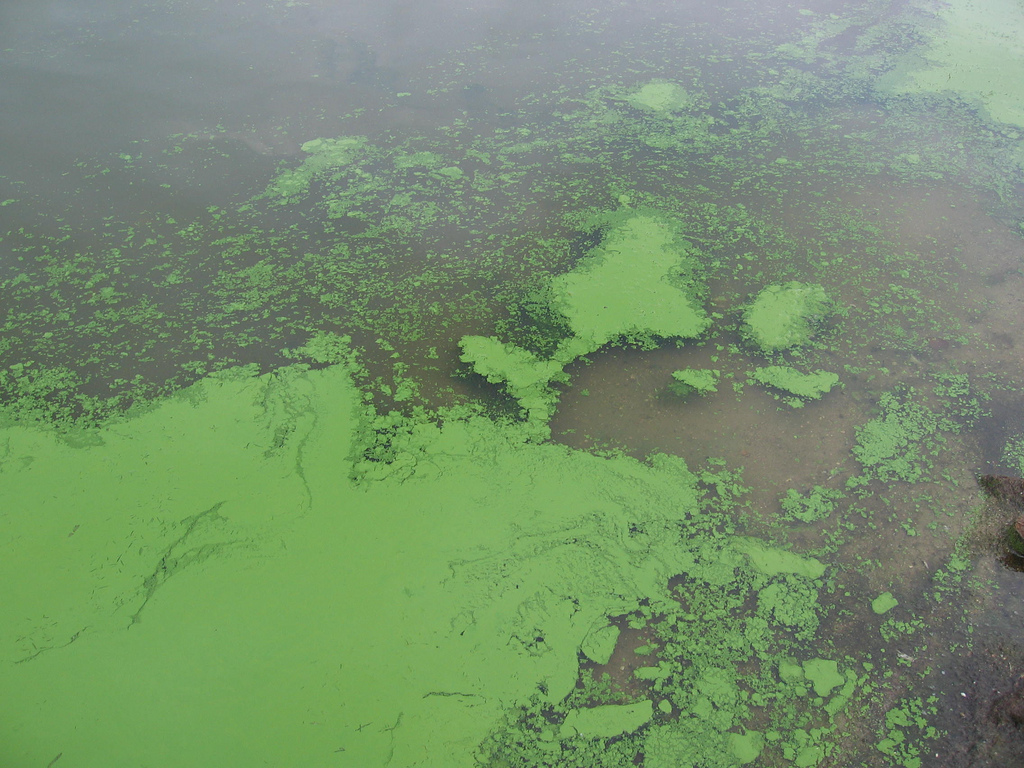Is Mother Nature fighting back? Chemical cloud that poisoned 200 may have been caused by algal bloom
09/21/2017 / By Tracey Watson

Is Mother Nature fighting back against the abuses that have been heaped on her for decades? In the last week of August, beachgoers eager to enjoy the last of the summer in Birling Gap, East Sussex, U.K., were suddenly thrown into a state of panic when a strange mist, which some described as smelling like chlorine, suddenly covered the coast. Hundreds of people were left with stinging eyes, while others started vomiting or had trouble breathing.
Terrified at first that they were in the middle of a terrorist attack, Beachy Head beach was immediately evacuated. After over 200 people were admitted to Eastbourne Hospital, however, authorities realized that this was no terror attack, but was likely either the result of a leak from a chemical container at sea, or an algal bloom.
The U.K.’s Daily Mail reported that hospital staff, unsure of exactly what they were dealing with, initially donned special protective gear and isolated the ill patients in contamination units.
Henry Prout, with the Newhaven Royal National Lifeboat Institution (RNLI), shared his theory of what happened with the Mail: “The gas could have come from a container dropped at sea many, many years ago whose seal has finally broken or it could have come from a vessel doing a chemical clean, which is prohibited in maritime law.” (Related: Stay up-to-date with the most pressing issues facing the environment at Environ.news.)
Dr. Simon Boxall, a lecturer in oceanography with Southampton University, disagrees. He believes that the most likely explanation is an algal bloom.
“We get at this time of year, if the conditions are right, a thing called a harmful algal bloom,” he explained. “You have the right conditions to provide lots of food for harmful algal blooms and then a couple of days of really sunny warm weather – perfect conditions for harmful algal blooms to bloom. They can also release chemicals into the water which then go up as aerosols. Its effects tend to be stinging eyes, restrictive problems. … The evidence is, once you get away from it, you recover pretty much immediately. The thing that doesn’t fit in is that a lot of these toxins have no smell and several people apparently described smelling chlorine.”
Nonetheless, Boxall feels sure that there is still a strong possibility that an algal bloom was to blame.
So, what exactly is an algal bloom?
Science Daily explains that algal blooms can occur in either fresh water or seawater, and are often recognizable by a visible discoloration in the affected area – usually red, green or yellowish-brown (a red tide is a good example of this).
Algal blooms are often caused by an excess of nutrients in the water, which promote the growth of plants and algae. As these plants die, they decompose and become food for bacteria. The bacteria, in turn, increase in number and start using up all the available oxygen in the water, killing insects and fish, and resulting in what is known as “a dead area.” (Related: How dams destroy the ecosystem by blocking natural fish routes and spawning toxic algal blooms.)
As was likely the case in Sussex, algal blooms can produce neurotoxins, which can have devastating effects on wildlife – or in this case, cause serious illness for over 200 people. These types of algal blooms are known as Harmful Algal Blooms (HABs).
So, was this incident the result of a chemical spill at sea, or did Mother Nature unleash the results of a toxic algal bloom on unsuspecting beachgoers?
I guess we’ll never know. …
Sources for this article include:
Tagged Under: algal bloom, chemical spills, ecosystem, environment, Mother Nature, neurotoxins, Ocean, toxins




















